April 6, 2024
Madhura Mohan
Exercises & Stretches That Help Fix Bad Posture
W
ere you aware? How you maintain your body’s posture throughout the day can greatly influence your overall health and well-being. It may appear insignificantly, but the impact of maintaining poor posture resonates throughout your entire body! In this modern era dominated by technology, countless hours are spent slouched over screens and scrolling through mobile phones, resulting in a widespread problem of poor posture. If not addressed, this can lead to discomfort, pain, and even long-term health complications. In this blog post, we will delve into various exercises specifically designed to correct poor posture…
1. CAT-COW POSE

The cat-cow pose involves a gentle flow between two positions, mimicking the motions of a cat and a cow.
1. To begin, position yourself on your hands, and knees, ensuring that your wrists are directly under your shoulders and your knees are under your hips. Keep your spine in a neutral position.
2. As you inhale, drop your belly towards the floor, lift your chest and tailbone towards the ceiling, and slightly tilt your head upwards. This position is known as the Cow Pose.
3. On the exhale, round your spine towards the ceiling, tuck your chin towards your chest, and draw your belly button towards your spine. This is referred to as the Cat Pose.
4. Continue to flow smoothly between these two poses, synchronizing your movements with your breath. Inhale as you transition into the Cow Pose, and exhale as you move into the Cat Pose. Repeat this sequence for several rounds, allowing your breath to guide the movement of your spine.
The Cat-Cow exercise is beneficial for improving flexibility and mobility, particularly in the chest and low back regions. It also helps strengthen the core muscles that support the spine, counteracting the negative effects of prolonged sitting and slouching. By practising this pose regularly, you can promote a healthier and more balanced posture.
2. PLANKS
Planks are incredibly effective exercises for strengthening the core and engaging multiple muscle groups throughout the body.
1. Start by assuming a push-up position, with your hands directly beneath your shoulders and your legs extended straight behind you, toes tucked under.
2. Your body should form a straight line from your head to your heels, ensuring that your core is engaged and your hips are neither raised nor sagging.
3. Maintain proper alignment by keeping your neck in line with your spine and gazing slightly forward.
4. Hold this position for as long as you can maintain proper form and alignment. Aim for at least 20-30 seconds initially and gradually increase the duration as you build strength.
Planks focus on the core muscles, which are essential for maintaining good posture. By activating the muscles that support the spine, planks encourage correct alignment and posture. This can combat the negative impact of slouching or hunching, resulting in improved upright and balanced posture in the long run.
3. SEATED ROWS WITH RESISTANCE BAND
Seated rows using resistance bands are a highly effective exercise for strengthening the upper back, shoulders, and arms, all of which are essential for maintaining proper posture.
1. Sit on the floor with your legs extended in front of you and wrap the resistance band around the soles of your feet.
2. Grasp one end of the resistance band in each hand, ensuring that your arms are fully extended straight in front of you and your palms are facing each other.
3. Sit with an upright posture, keeping your back straight and engaging your core muscles to maintain stability throughout the exercise.
4. While keeping your elbows close to your sides, exhale as you pull the resistance band towards your waist. Squeeze your shoulder blades together and bring your hands to your sides.
5. Pause briefly when you reach the fully contracted position, then inhale as you slowly release the tension in the band and return to the starting position with controlled and deliberate movements.
Seated rows target the muscles of the upper back, and deltoid and counteract the effects of rounded shoulders and forward head posture.
4. CHIN TUCKS
The chin tuck exercise is a highly effective movement that specifically targets the muscles in the neck and upper back. It is particularly beneficial for addressing posture issues like forward head posture.
1. Sit or stand up straight with your shoulders relaxed and your spine in a neutral position.
2. Gently elongate your spine by lifting it upwards and drawing your shoulder blades down and back.
3. While keeping your eyes level and facing forward, slowly retract your chin by sliding it straight back, as if you’re attempting to create a double chin.
4. Hold the chin tuck position for a few seconds, all while maintaining normal breathing.
5. Relax and return to the starting position.
6. Repeat the movement for several repetitions.
The chin tuck exercise is effective in building strength in the muscles located in the front of the neck, promoting proper alignment of the head directly above the shoulders. This exercise helps in reducing tension in the neck and shoulders, as well as decreasing the stress on the muscles and joints in the upper body.
5. SHOULDER BLADE SQUEEZE
The shoulder blade squeeze is a simple, yet effective exercise that targets the muscles located between the shoulder blades to enhance posture.
1. Sit or stand up straight with your shoulders relaxed and your spine in a neutral position.
2. Slowly bring your shoulder blades down and back towards each other, as if you are attempting to hold a pencil between them.
3. Concentrate on keeping your chest open and your shoulders away from your ears while squeezing your shoulder blades together.
4. Maintain the squeeze for a few seconds while breathing normally.
5. Relax and release the tension, allowing your shoulder blades to return to their initial position.
6. Repeat the exercise multiple times.
The shoulder blade exercise targets muscles of the upper back, improves the stability of shoulder joints and counteracts the effects of rounded shoulders and forward head posture.
6. WALL ANGLES
Wall angles, also referred to as wall slides, are an excellent exercise for enhancing posture, shoulder mobility, and thoracic spine mobility.
1. Position yourself with your back against the wall, ensuring your feet are approximately a foot away from the wall. Make sure that your heels, buttocks, shoulders, and head are in contact with the wall.
2. Raise your arms, bending your elbows at a 90-degree angle. Keep your upper arms parallel to the floor and forearms pointing towards the ceiling. Your palms should be facing forward, and your elbows should be touching the wall.
3. While maintaining contact between your back, head, and arms with the wall, gradually slide your arms up overhead as far as you can comfortably reach. Straighten your elbows as you perform this movement.
4. Once your arms are fully extended overhead, pause briefly, and then reverse the movement by sliding your arms back down to the starting position.
By strengthening muscles of the upper back, shoulders, and core, Wall Angles support the spine and help maintain proper posture.
7. HIP FLEXORS
Tight hip flexors can contribute to poor posture by pulling the pelvis into an anterior pelvic tilt, leading to lower back pain and curvature of the lumbar spine. Stretching hip flexors can alleviate this tension and improve posture.
1. Begin by kneeling on the floor with one knee bent at a 90-degree angle in front of you, while the other knee rests on the floor behind you.
2. Maintain an upright torso and activate your core muscles to support your spine.
3. Gradually shift your weight forward, allowing your hips to move slightly forward until you feel a gentle stretch in the front of your hip and thigh on the leg behind you.
4. Hold the stretch for 20-30 seconds, taking deep breaths and keeping a steady, relaxed posture.
5. Slowly release the stretch and switch to stretch the other hip flexor by switching legs.
Hip Flexor exercise can help realign the pelvis, reducing anterior pelvic tilt often associated with poor posture. Strengthening hip flexors reduces the likelihood of compensatory movements that lead to poor posture.
8. CHEST OPENER STRETCH
The Chest Opener Stretch is a beneficial exercise that can help improve posture by stretching the chest and front shoulder muscles, which may be tight and shortened due to poor posture habits like slouching.
1. Stand upright with your feet hip-width apart and shoulders relaxed.
2. Interlock your fingers behind your back or clasp your hands together, if possible.
3. Extend your arms and slowly raise them away from your body, ensuring they remain straight.
4. While lifting your arms, concentrate on opening your chest and bringing your shoulder blades closer together.
5. Maintain proper alignment by keeping your head in line with your spine and looking straight ahead.
6. Hold the stretch for 20-30 seconds, taking deep steady breaths.
7. Release the stretch.
Chest Opener stretch encourages the adoption of better posture habits throughout the day. This exercise counteracts the effects of slouching and rounded shoulders, promoting better posture.
9. NECK STRETCH
Neck stretches help relieve tightness accumulated from poor posture, help maintain flexibility of neck muscles and play a significant role in correcting posture.
1. Sit or stand up straight with your shoulders relaxed and your spine in a neutral position.
2. Slowly tilt your head to one side, bringing your ear towards your shoulder until you feel a gentle stretch along the side of your neck.
3. Hold the stretch for 20-30 seconds, breathing deeply and evenly.
4. Return your head to the center and repeat the stretch on the other side.
5. You can also perform a forward neck stretch by gently dropping your chin towards your chest, feeling a stretch along the back of your neck.
6. Hold the stretch for 20-30 seconds, then slowly lift your head back to the center.
Regularly stretching your neck is essential for preserving flexibility and range of motion in the neck joints. These joints can often become restricted due to poor posture or stiffness. By stretching the neck muscles, you promote proper alignment of the cervical spine, which is important for maintaining good posture.
Beyond just causing physical discomfort, poor posture can have far-reaching effects on different aspects of your overall health and well-being…
Aim to do several sets of each exercise on most days of the week, and you will soon be on the path to a pain-free, perfectly aligned posture. Say goodbye to bad posture and welcome in the good, it’s time to regain control...
Also Read: Signs & Symptoms Of High Stress Levels



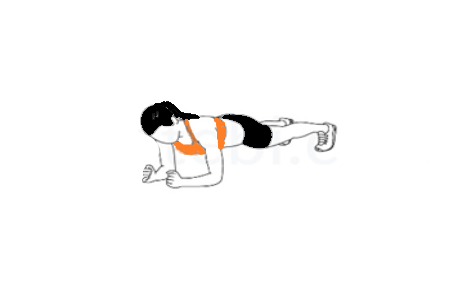
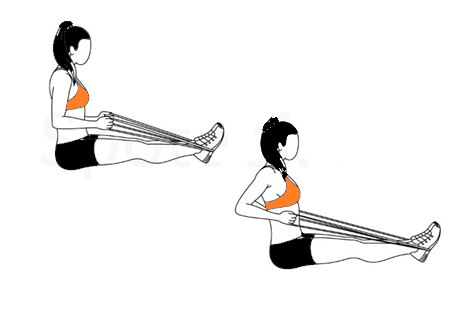

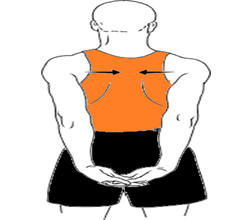
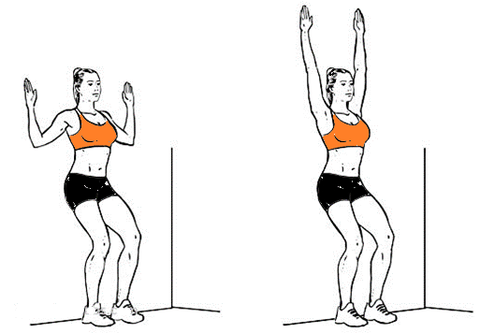
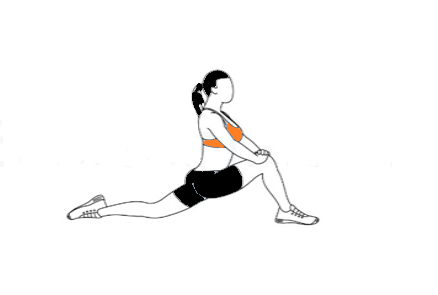

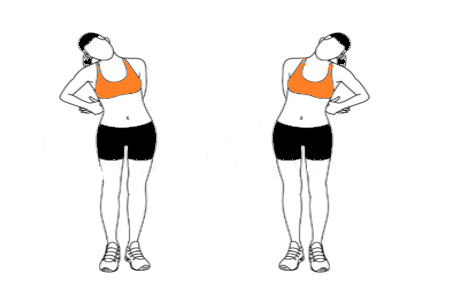
 Follow our Instagram page for the latest updates: badalkhudko
Follow our Instagram page for the latest updates: badalkhudko




Leave a comment